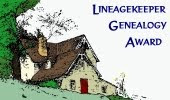The early morning murmurings of birds and insects was interrupted by the 6:00 a.m. blast of a cannon on the road outside my bedroom window. It was Home Town Day!
That wasn’t the name of the celebration, but the activities of the day could be transposed on about any small town in America with a comfortable fit.
Folks in town didn’t have much money, but they had a lot of spirit and they knew how to use the resources at hand to maximize their innate but usually unseen “fun” content.
The old hay wagons were wrapped with crepe paper streamers of red, white and blue. Old wood chairs were set on the sometimes warped floor so the folks in the town band would have a perch on which to balance as the horse team pulled them on a tour through town and later on the parade route.
When the cannon shot went off by our home, the fellows would watch the curtains in my bedroom window for the certain rapid movement and emergence of a scruffy looking red head in the window frame.
I was chosen to be “Uncle Sam” in the parade a couple of times. The size of the horse increased in successive years. My physical grown also necessitated my mother having to find a larger costume or modify the costume that some other patriotic symbol 
The parade route was short. Very short. It was only about 3 blocks long but even at that length, it passed by all of the commercial, city and church properties in town. Of course, its length differed based on your perspective. It depended on your age or if you were an entrant as compared to watching from alongside the road.
When I was four, my brother-in-law made a herd of wooden rocking horses for one of the floats. We rocked our way all the way through town. That was a lot of rockin’ and wavin’ for young cowboys and cowgirls.
A carnival of small booths created by putting planks on 55-gallon drums was sited in the park just south of the church. Bean bag and ring toss games, fish ponds and grab bag stations filled the newly established blocks of space. Pronto pups and cotton candy booths were behind the church.
The recreational hall in the church was full of residents and visitors from all over. Quilting and other crafts were on exhibit. Chairs were set up as gathering spots for old friends to sit and visit.
A wonderful lunch was offered in the lower level of the church that had been prepared by the 
An evening program presented representation from the talents of residents and surprisingly, some of them really had talent.

There are still celebrations like this in some small towns today. They don’t and can’t exist in larger cities. If you haven’t visited one before or imbibed in the warm glow and conviviality of these gatherings, put it on your summer schedule. Find one, then go visit. Get a taste of the celebration of life as it used to be enjoyed in most communities across America.





















